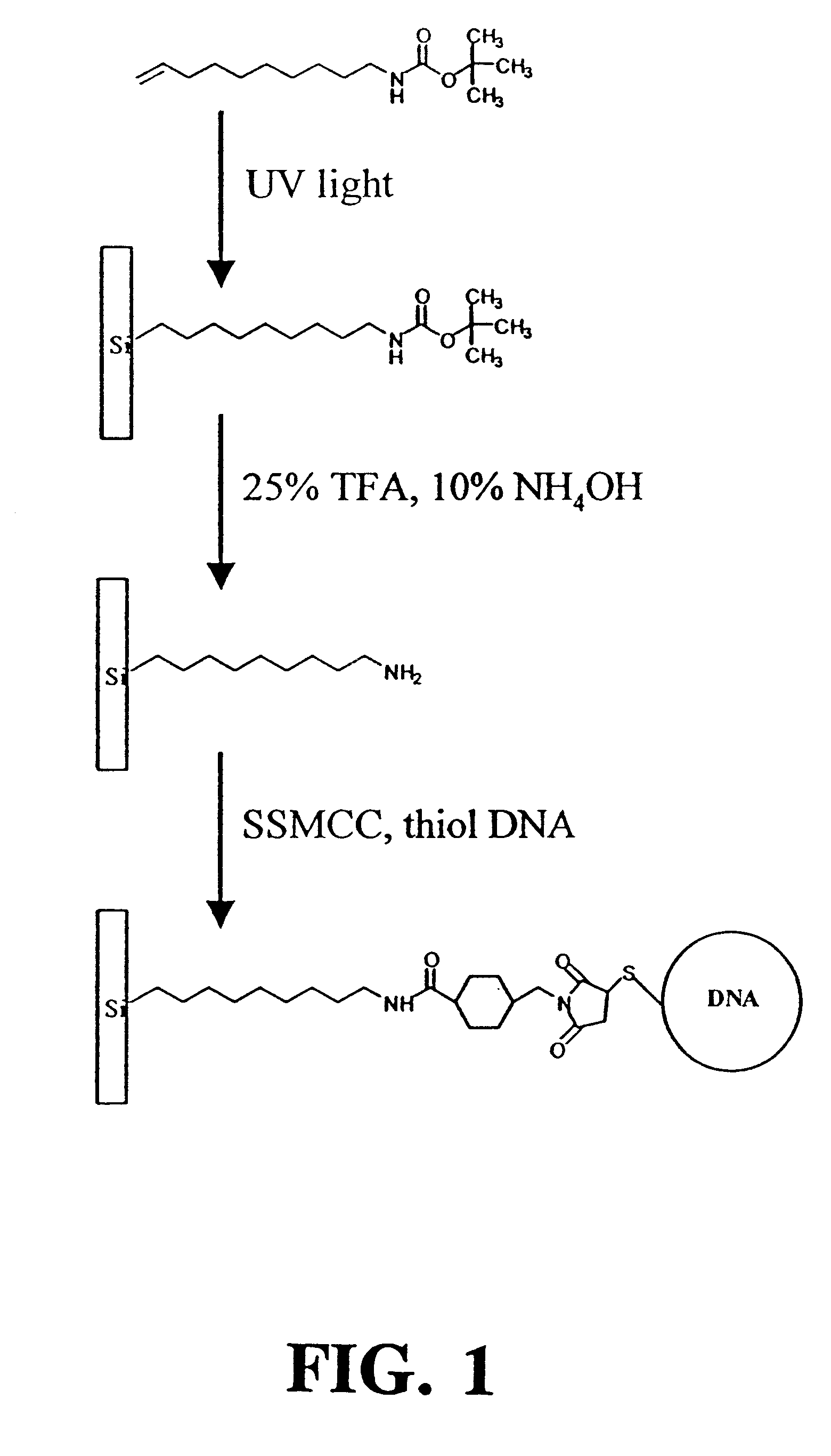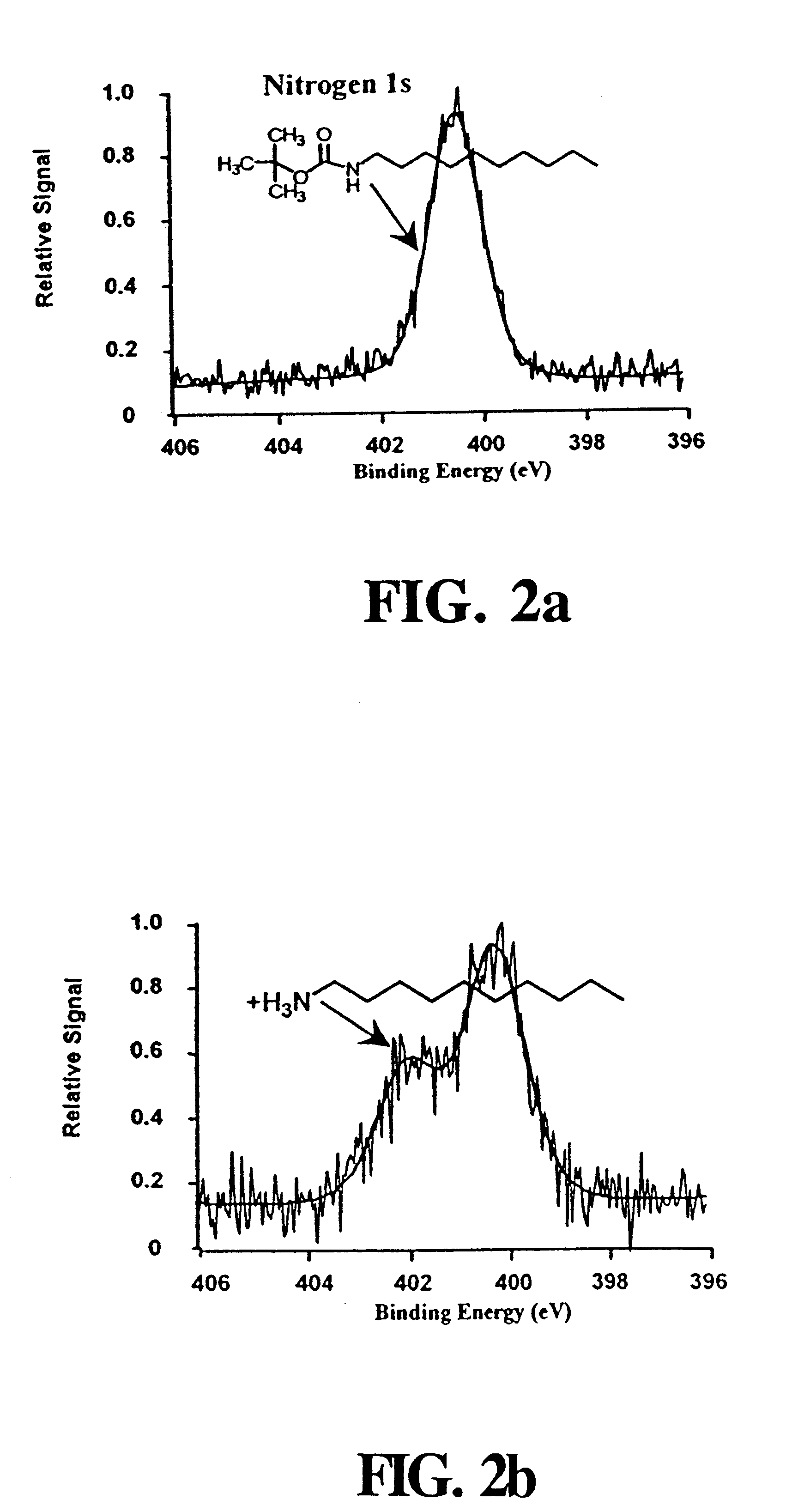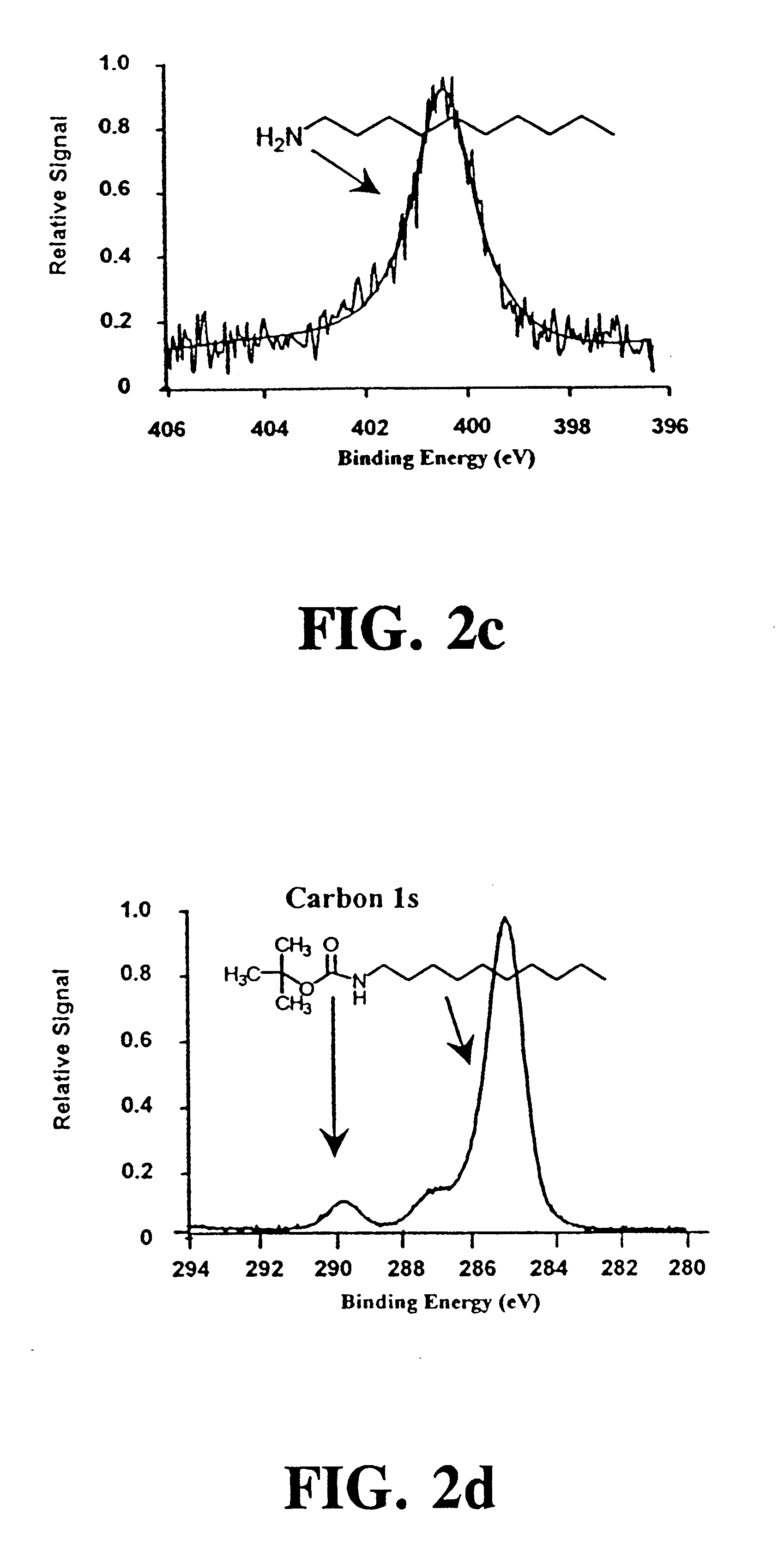Modified carbon, silicon, & germanium surfaces
a technology of modified carbon and silicon, applied in the field of modified carbon, silicon, & germanium surfaces, can solve the problems of inhomogeneity and variability in the relative number of si, difficulty in reproducibility and homogeneity of subsequent chemical-modified surfaces, and inability to achieve the desired surface characteristics of ideal surfaces, etc., to achieve the effect of limiting the time allowed for deprotection reaction, limiting the number of available binding sites, and easy control of the surface density of biomolecul
- Summary
- Abstract
- Description
- Claims
- Application Information
AI Technical Summary
Benefits of technology
Problems solved by technology
Method used
Image
Examples
example 1
Synthesis of Oligonucleotides
All oligonucleotides were synthesized by the University of Wisconsin Biotechnology Center, Madison, Wis. Two types of oligonucleotides were employed for the Examples which follow: oligonucleotides to be attached to the surface, and oligonucleotides employed for hybridization to the surface. Oligonucleotides to be attached to the surface were thiol-modified at either the 5' end using the reagent 5 '-Thiol-Modifier C6 (HSC6, Glen Research, 22825 Davis Dr., Sterling, Va. 28164, www.glenres.com), or at the 3'end using the reagent 3'-Thiol-Modifier C3 S-S CPG (C3SH, Glen Research); each of these oligonucleotides were 31 nt in length, comprised of a 15-mer dT spacer sequence at the 5' end, and a specific 16-mer sequence at the 3' end. The three 31-mer sequences employed were
5'-HSC6-T.sub.15 AA CGA TCG AGC TGC AA3' (SEQ. ID. NO:1),
5'-HSC6-T.sub.15 AA CGA TGC AGG AGC AA3' (SEQ. ID. NO:2), and
5'-FAM-T.sub.15 AA CGA TCG AGC TGC AA-C.sub.3 SH3' (SEQ. ID. NO:3).
In S...
example 2
Synthesis of 10-Aminodec-1-ene
The 10-aminodec-1-ene used to modify the silicon surfaces was prepared using a variant of the Curtius reaction..sup.47 A solution of 40.5 g of 10-undecenoyl chloride and tetrabutylammonium bromide (200 mg) was prepared in 300 mL of dichloromethane and cooled in an ice bath. Sodium azide (15.6 g) was dissolved in 50 mL of water and added to the mixture. This mixture was stirred continuously for 2 hours in an ice bath. The organic layer was removed, washed twice with 50 mL of water, dried over anhydrous magnesium sulfate for 36 hours and filtered. Trifluoroacetic acid (20.3 mL) was slowly added with stirring and the mixture was refluxed for 6 hours. The resultant mixture containing the trifluoroacetamide was cooled and washed twice with 50 mL of saturated aqueous sodium bicarbonate, then dried over magnesium sulfate and filtered. The solvent was removed by rotary evaporation to yield an oil which was vacuum distilled to produce the pure trifluoroacetamide...
example 3
Synthesis of t-BOC-Protected Amine
t-BOC protected 10-aminodec-1-ene was prepared by standard methods..sup.49 A portion of the purified amine (5.11 g) was dissolved in 60 mL of chloroform that was added to a solution of 3 g NaHCO.sub.3 in 50 mL of water. Sodium chloride (6.45 g) was added along with 7.18 g of di-tert-butyl dicarbonate dissolved in a few milliliters of chloroform. This mixture was refluxed for 90 min and extracted twice with 50 mL of ether. The collected organic extracts were dried over magnesium sulfate, filtered and the ether removed by rotary evaporation. The t-BOC-protected product was purified by vacuum distillation, and its identity was confirmed by NMR. Treating a 10 .mu.L aliquot of this product with 1 mL of 25% TFA in methylene chloride for 1 hour at room temperature recovered the free amine as demonstrated by thin layer chromatography.
PUM
| Property | Measurement | Unit |
|---|---|---|
| Contact angle | aaaaa | aaaaa |
| Contact angle | aaaaa | aaaaa |
| Contact angle | aaaaa | aaaaa |
Abstract
Description
Claims
Application Information
 Login to View More
Login to View More - R&D
- Intellectual Property
- Life Sciences
- Materials
- Tech Scout
- Unparalleled Data Quality
- Higher Quality Content
- 60% Fewer Hallucinations
Browse by: Latest US Patents, China's latest patents, Technical Efficacy Thesaurus, Application Domain, Technology Topic, Popular Technical Reports.
© 2025 PatSnap. All rights reserved.Legal|Privacy policy|Modern Slavery Act Transparency Statement|Sitemap|About US| Contact US: help@patsnap.com



